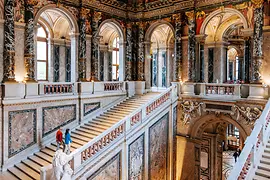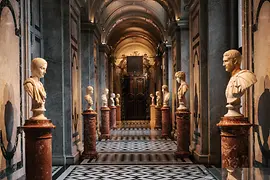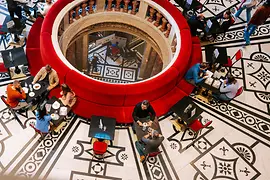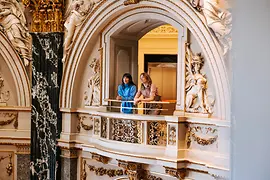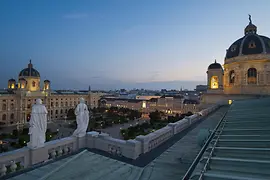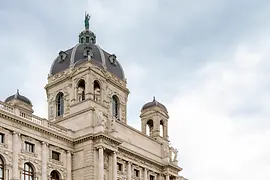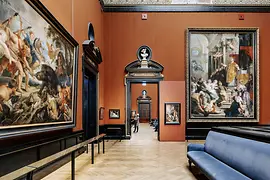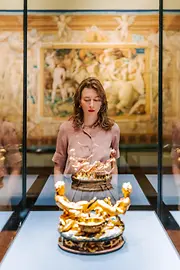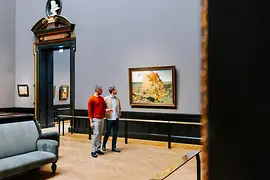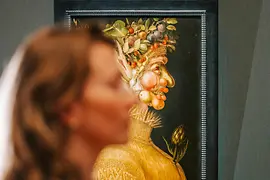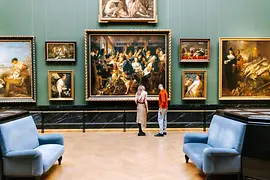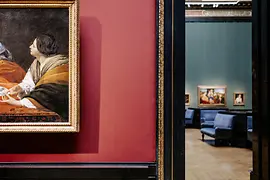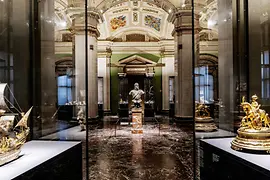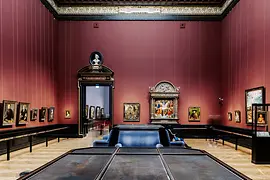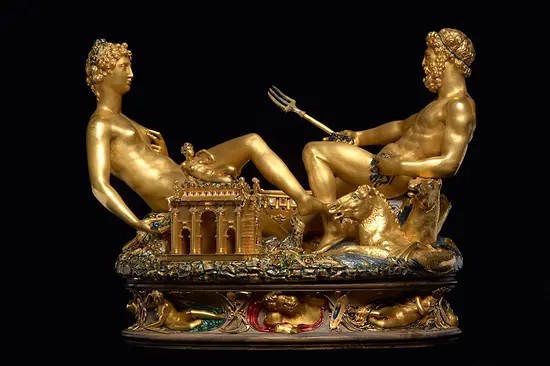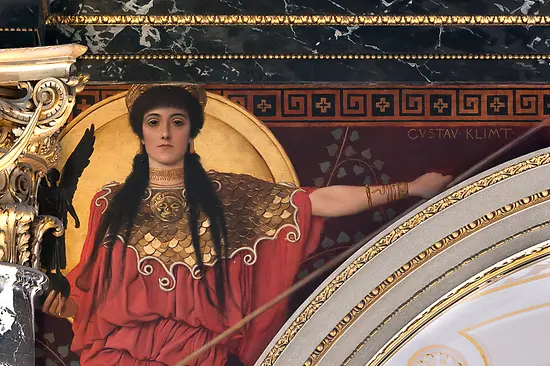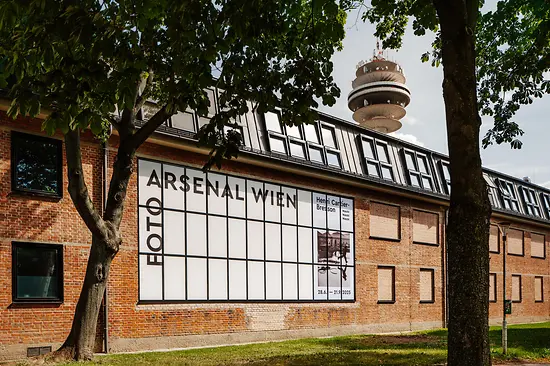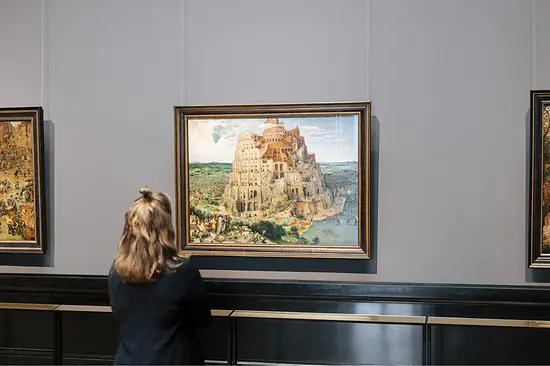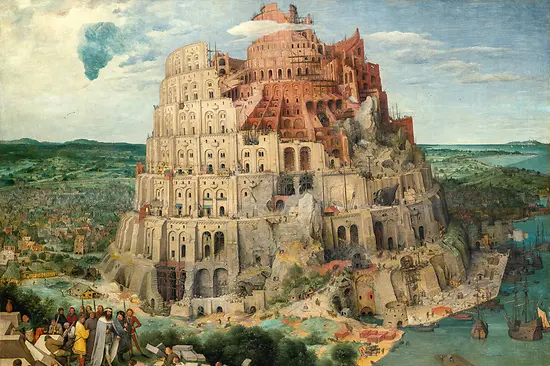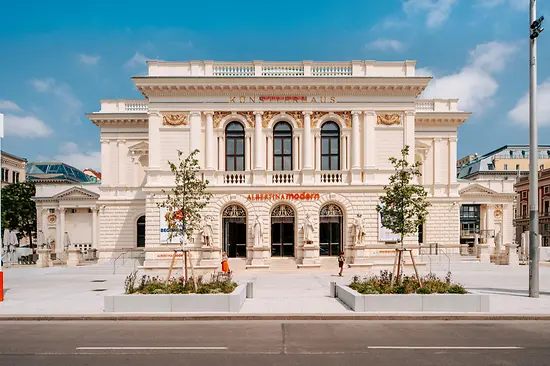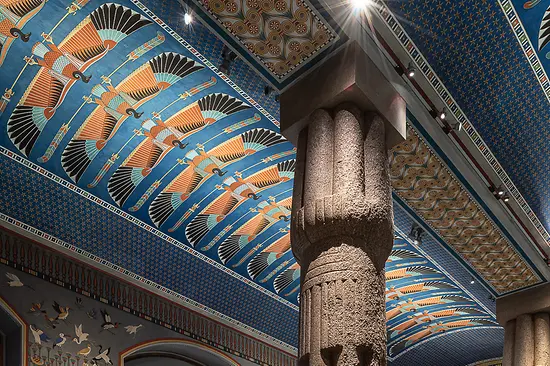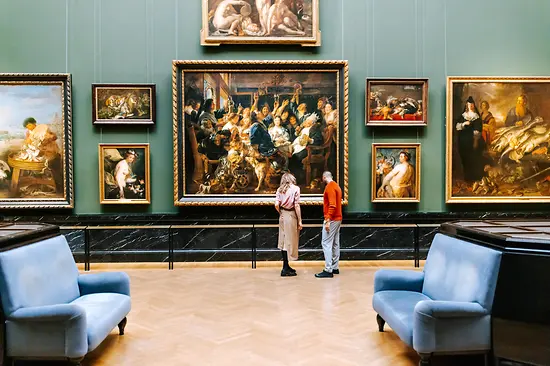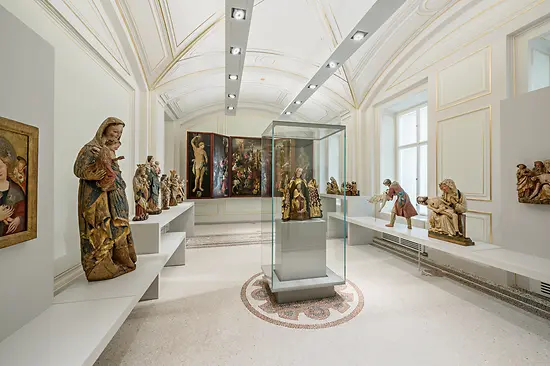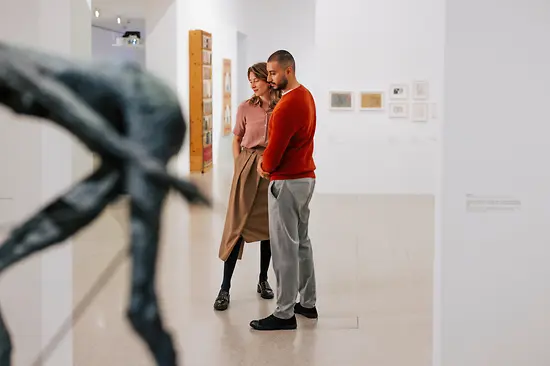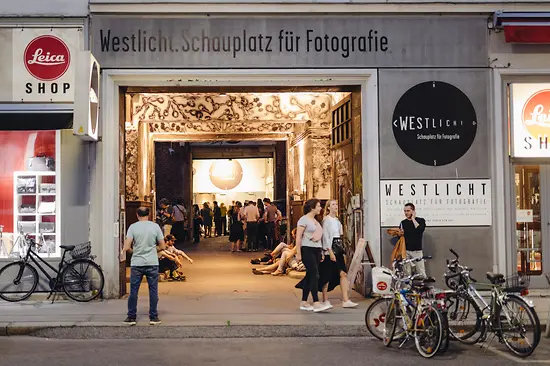Kunsthistorisches Museum Wien (Art History Museum)
The Kunsthistorisches Museum Vienna (KHM for short) is one of the most important museums in the world. Thousands of works of art from antiquity to the late Baroque period that were collected over the course of several centuries by the Habsburg imperial dynasty are exhibited here. Paintings, sculptures, tapestries and golden treasures, but also curiosities and oddities create a fantastic world of wonder that spans the ages.
The building was commissioned by Emperor Franz Joseph as part of the expansion of the city and the construction of Vienna’s Ringstrasse. The imperial collections, which until then had been spread across many locations, were to be exhibited together. The museum was opened in 1891 very close to the former imperial residence, the Hofburg, and is now the largest art museum in Austria.
Display alternative text
Video about the Kunsthistorisches Museum Vienna.
The Kunsthistorisches Museum is regarded as a complete work of art, but individual departments also enjoy world fame in their own right. The art gallery houses numerous major works of Western art by the so-called “old masters” of the 14th to 18th centuries. These include Raphael’s “Madonna in the Green”, Vermeer's “The Art of Painting”, the Infanta paintings by Velazquez, masterpieces by Rubens, Rembrandt, Dürer, Titian, Tintoretto, Arcimboldo and the Bassano dynasty of artists. The highlight of the world’s largest collection of paintings by Pieter Bruegel the Elder (around a third of which belong to the KHM collection) is his famous “Tower of Babel”.
The Kunstkammer is a kind of “museum within a museum”. Filled with rarities from the Habsburgs’ former treasure chambers and curiosity cabinets, it celebrated its grand reopening in 2013. The collection is one of the most important of its kind and showcases treasures from the Middle Ages, Renaissance and Baroque periods. Highlights include the Kunstkammer of Emperor Rudolf II, the Exotica complex and the famous Saliera, the golden salt cellar by Benvenuto Cellini.
However, the museum is also home to numerous much older exhibits: the Collection of Greek and Roman Antiquities, the Egyptian and Near Eastern Collection and the Coin Collection fascinate visitors with treasures from the cultures of bygone times.
Major temporary exhibitions are held in spring and fall to focus on the collection’s main themes, and the museum’s own works of art are often exhibited alongside high-profile international loans.
The building itself is a work of art, as are the many treasures it houses. Spectacular ceiling decorations, reliefs and ornaments can be found scattered throughout the Kunsthistorisches Museum. It is worth looking up while climbing the impressive staircase, since it is adorned with works by Gustav Klimt, Ernst Klimt, Franz Matsch and Hans Makart. Equally impressive is the museum’s domed lobby, which houses a café-restaurant. The KHM is transformed into a party venue once a month: in addition to bars and music in the Kuppelhalle, the “Kunstschatzi” offers various guided tours of the collections.
Together with its companion building, the Museum of Natural History Vienna, the Kunsthistorisches Museum is one of the most important monumental historicist buildings along the Ringstrasse. The architectural mirror image of the KHM, which is located directly opposite, is one of the most prominent natural history museums in the world with a collection of around 30 million objects. Only the statues on the roof domes set the museums apart from each other. A huge statue of Empress Maria Theresa sits enthroned between the buildings on Maria -Theresien-Platz. Together, the two museums form an impressive ensemble, which is also part of the “Historic Center of Vienna” World Heritage Site.
The Kunsthistorisches Museum is part of a group of Viennese museums and collections known as the KHM Museum Association. It includes the Weltmuseum, the Theater Museum, the Imperial Carriage Museum in Schönbrunn, the Imperial Treasury, the collections in what is known as the Neue Burg (the Collection of Arms and Armor, the Collection of Historic Musical Instruments and the Ephesos Museum) and the Theseus Temple in the Volksgarten.
It is one of eight Austrian federal museums. Annual ticket for all federal museums
- Maria-Theresien-Platz, 1010 Wien
- info@khm.at
- https://www.khm.at
Vienna City Card
Standard ticket price: 23€ /
Savings: 1 € /
Opening times
- Mo, 10:00 - 18:00
- Tu, 10:00 - 18:00
- We, 10:00 - 18:00
- Th, 10:00 - 21:00
- Fr, 10:00 - 18:00
- Sa, 10:00 - 18:00
- Su, 10:00 - 18:00
Accessibility
5 Steps (Double swinging doors 300 cm wide)
on Maria-Theresien-Platz, no ramp
Barrier-free entrance: Burgring 5 via porter, visitor service accompanies you to the elevator and into the building
5 Parking spaces for people with disabilities
on Heldenplatz
Wheelchair accessible restroom available.
Wheelchair rental possible (please reserve one day in advance). Special tours for visitors with dementia, in easy language, in sign language as well as guided touch tours (Tel. +41 1 525 24-5202 or email: kunstvermittlung@khm.at), Three masterpieces of the Renaissance collection of the painting gallery, selected objects of the Kunstkammer, the Egyptian-Oriental collection and the collection of antiquities are available to the blind and visually impaired as castings for touching. A brochure with image descriptions of this in Braille is available.
Wheelchair users who visit the museum via Burgring 5 can purchase their tickets at the shop in the lobby.
Induction loop available at the audio guide stand.
https://www.khm.at/en/learn/art-education/inclusive-art-education/

